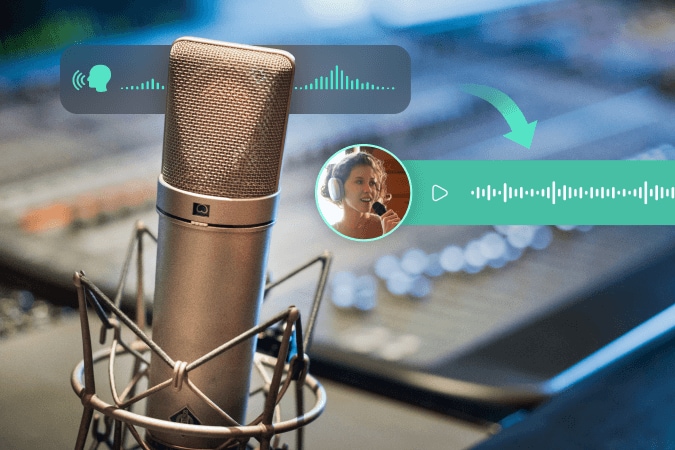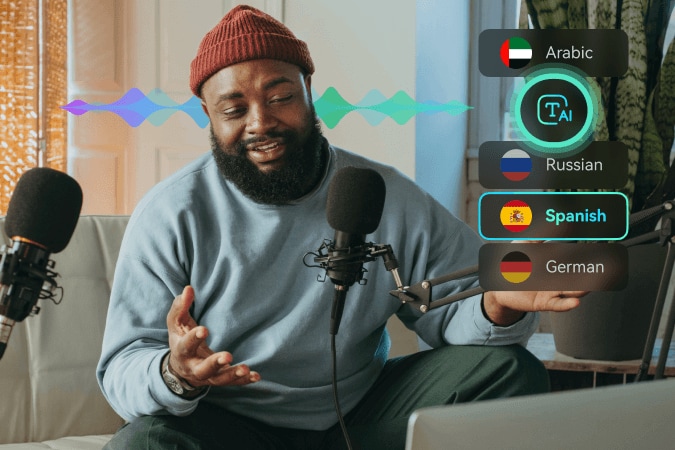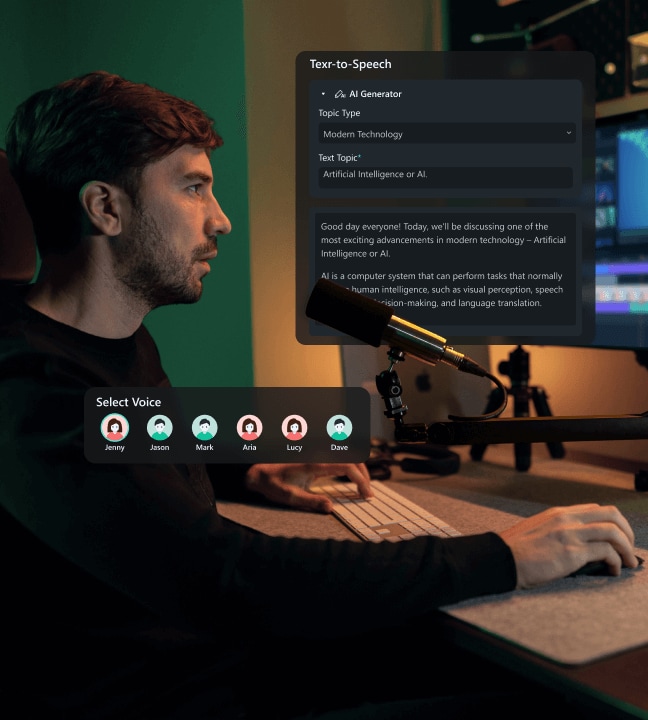
Are you tired of wasting hours perfecting your video narrations using your audio recordings? You can streamline the process with a reliable text-to-speech (TTS) converter to generate AI voice models of any voice.
Yes, you read that correctly. You can have your favorite actor, rapper, politician, or athlete narrate your audio and video content. TTS converters use the latest AI and machine learning (ML) algorithms to transform written scripts into natural-sounding speech in mere minutes.
Whether you wish to spice up your podcasts or gather more followers to your YouTube channel, AI-powered text-to-speech conversion can help you generate the desired content. Let’s explore the mechanisms behind TTS conversion to help you turn your own voice into text-to-speech.
In this article
How Text-To-Speech and Voice Cloning Work

Text-to-speech is a powerful technology available online these days. It powers TTS converters, allowing them to transform written text into a natural-sounding voice. These converters use AI-driven audio-text algorithms and voice cloning to dynamically transform text to audio, revolutionizing how internet users create content and convey information.
AI sound and voice generators rely on AI text-to-audio algorithms, neural networks, and machine learning to convert text to speech and translate written words into natural-sounding, expressive, multilingual audio content.
The generators first analyze the provided text, break each word down into its constituent parts of speech (aka phonemes), and then digitize the phonemes to produce desired sounds.

Nowadays, you have an extensive range of all-encompassing, AI-powered TTS platforms that can do more than clone your voice or convert text to your voice. They offer various audio settings and customization options to help you adjust the converted audio’s volume, playback speed, pitch, etc.
TTS can help you tailor speech output to match your unique requirements. Let’s delve deeper into how voice cloning and TTS work to make it easier to understand.

Voice cloning creates a digital clone of a human voice using AI and machine learning algorithms. The process lets you transform your voice into a realistic rendition of any voice imaginable.
It allows text-to-speech converters to create reusable synthetic voice models that you can customize according to your content creation needs. AI and machine learning algorithms train TTS converters using a robust audio data set, allowing them to process a vast selection of audio clips.
TTS converters then process the available data, breaking it into individual soundwaves to interpret the input data. They tap into speech model training to generate realistic human voice models.
Once a TTS converter trains its algorithm to understand the human voice, it uses existing audio data to create an AI voice model according to your text input. It can also convert speech to text, depending on your needs.
Two Ways to Generate Text-To-Speech With Your Voice
You can transform your voice into text in two ways. You can record your voice and use AI voice cloning to clone your voice as a sound effect. Another way is to use a TTS converter to generate text-to-speech using the AI-generated model of your voice.
Simply record your voice and use a TTS converter to input the desired text and transform it into natural-sounding speech using the generated model of your voice. There’s a distinct difference between TTS and voice cloning.
The latter allows you to use your own voice to generate text-to-speech, while the former can include other voice models. In addition, voice cloning mimics your voice’s unique characteristics and qualities, while TTS simply synthesizes speech from your text input.
Generate Text-To-Speech Using Your Voice in Different Languages

Language barriers often hinder international communication, preventing people from communicating seamlessly worldwide. As the world grows more integrated, multilingual audio and video content become a norm across online streaming and social media platforms, allowing you to reach broader audiences worldwide.
Modernized AI-enabled translation systems rely on advanced TTS and voice cloning solutions to facilitate real-time communication across languages. These tools use AI-generated voice models to translate and transform any text or voice into multilingual audio and video content for seamless global distribution and sharing.
TTS converters and AI voice generators like Wondershare Filmora let you connect your content with global audiences using multilingual AI vocal models and TTS support for over 30 diverse languages.
How to Generate Text-To-Speech With Your Own Voice

The most straightforward way to generate text-to-speech with your own voice is to use a reliable, all-in-one AI voice generator like Wondershare Filmora. Filmora uses the power of the latest advanced text-to-audio AI algorithms to convert text to speech for your audio and video projects.
In addition, Filmora gives you access to over 40 natural-sounding voice models in 30+ languages. You can even use Filmora to clone your voice and empower your audio and video content with more consistent branding.
Filmora offers two AI-enabled text-to-speech generation modes:
- Use Filmora AI Copywriting to generate the input script for text-to-audio conversion.
- Copy your ready-made script in Filmora to transform it into speech using the AI-generated model of your voice.
Aside from empowering your video content with AI-powered TTS and voice cloning, Filmora can automatically segment the sentences in your input script to synchronize them with the speech audio, trim the audio clip according to your requirements, and place it in the desired position.
Transforming your voice to text using Filmora AI voice generation, voice cloning, and text-to-speech is straightforward. Download and install Filmora on your computer, then follow the steps below to convert text to speech:
Step 1: Launch Filmora and import your video. Drag and drop the video onto the timeline and navigate to the Titles tab.
Step 2: Choose the desired preset and drag it to the editing timeline.

Step 3: Click the matching title or subtitle track on the timeline to select it and navigate to the Text To Speech option in the right-hand Properties panel. Click Clone Voice, connect your microphone to the computer, and click Tap to record in the dialog box. Then, read the script you wish to convert to your voice (ensure the recording doesn’t exceed one minute). Once you finish, click Clone Voice. Filmora will record and clone your voice using AI to generate an AI model.

Step 4: Select your voice model under Text To Speech in the Properties panel. Then, input your text and click Generate to transform your script into your voice.

Conclusion
You can transform written text into speech in your voice using AI and ML text-to-audio and audio-to-text algorithms. This article’s basics of text-to-speech using your own voice, including TTS, its principles, how it works, and voice cloning, is an excellent starting point.
Filmora is your best bet because it combines AI-enabled voice generation, text-to-speech, voice cloning, and AI copywriting. It can help you streamline multilingual content creation and empower you to effortlessly create a voiceover and narration for online tutorials, e-learning classes, product reviews, interviews, podcasts, etc.
With Filmora TTS conversion and voice cloning, you’ll never have to think about recording and editing a voiceover again. Instead, you can have Filmora AI do the heavy lifting, helping you focus on more important matters.



 100% Security Verified | No Subscription Required | No Malware
100% Security Verified | No Subscription Required | No Malware

